Recently, we heard someone trying to describe what a Russian Desman (Desmana moschata) looks like and the delightful response was that it resembled a mole-mermaid! Unfortunately, life is no fairytale for this species. Currently listed as Endangered on the IUCN Red List, it is expected that the species will be moved to Critically Endangered later this year due to continuing severe declines. Conservation attention is desperately needed, so the SMSG is pleased to be supporting a new conservation project in Kazakhstan. We hope this work, in collaboration with experts across the species’ native range, will contribute to the understanding of the threats to the species and be instrumental in developing conservation actions.
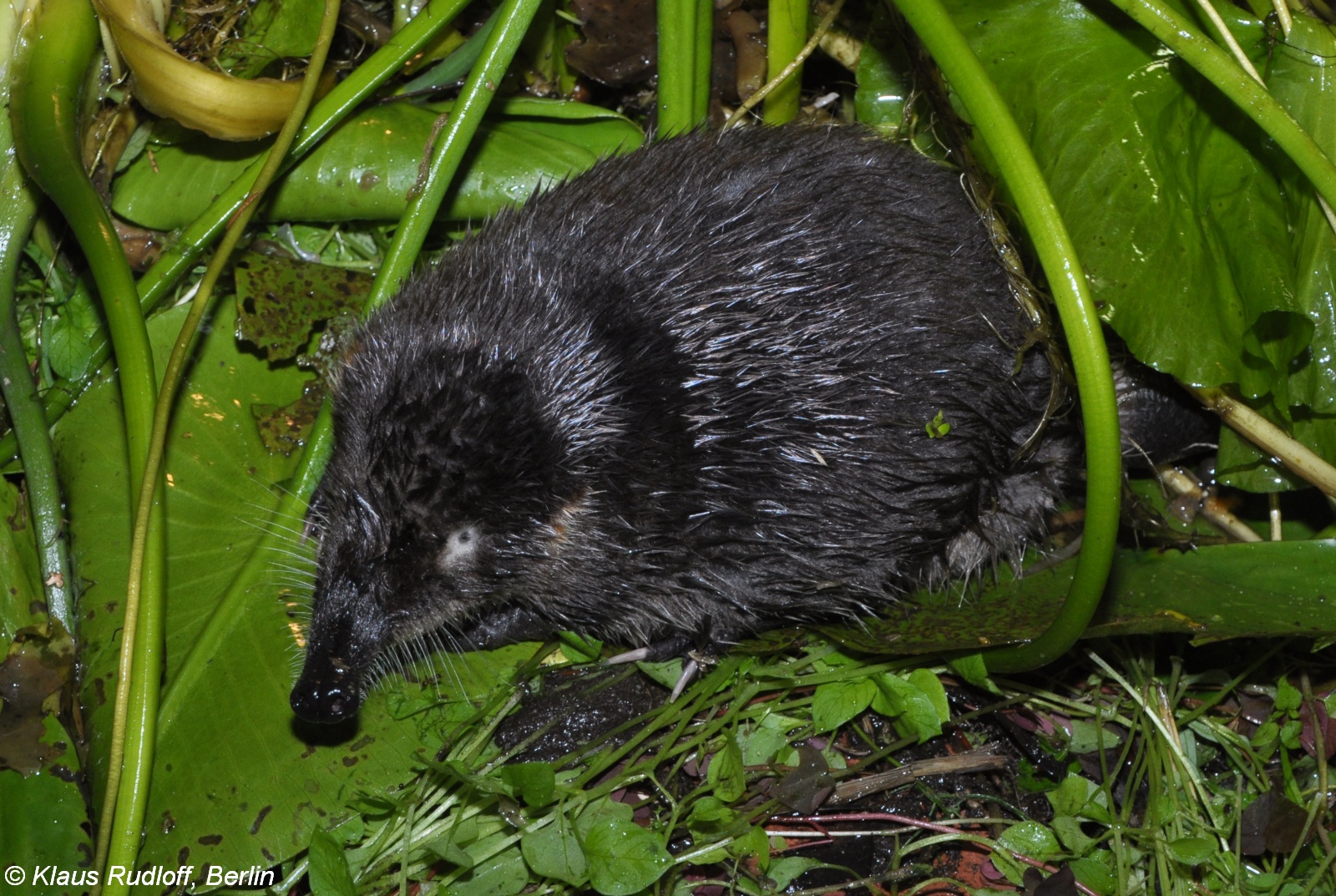
So, what exactly is a Russian Desman?
The Russian Desman (Desmana moschata), an aquatic member of the mole family, is endemic to waterways in European Russia, Ukraine and Kazakhstan. The species is pretty unusual, indeed, it features high up on ZSL’s EDGE Mammal List. To get an idea of what this unusual animal is like check out this video. The species is in severe decline, probably due to a number of factors ranging from loss and degradation of lakes and rivers, through to getting snagged up as bycatch in fishing nets.
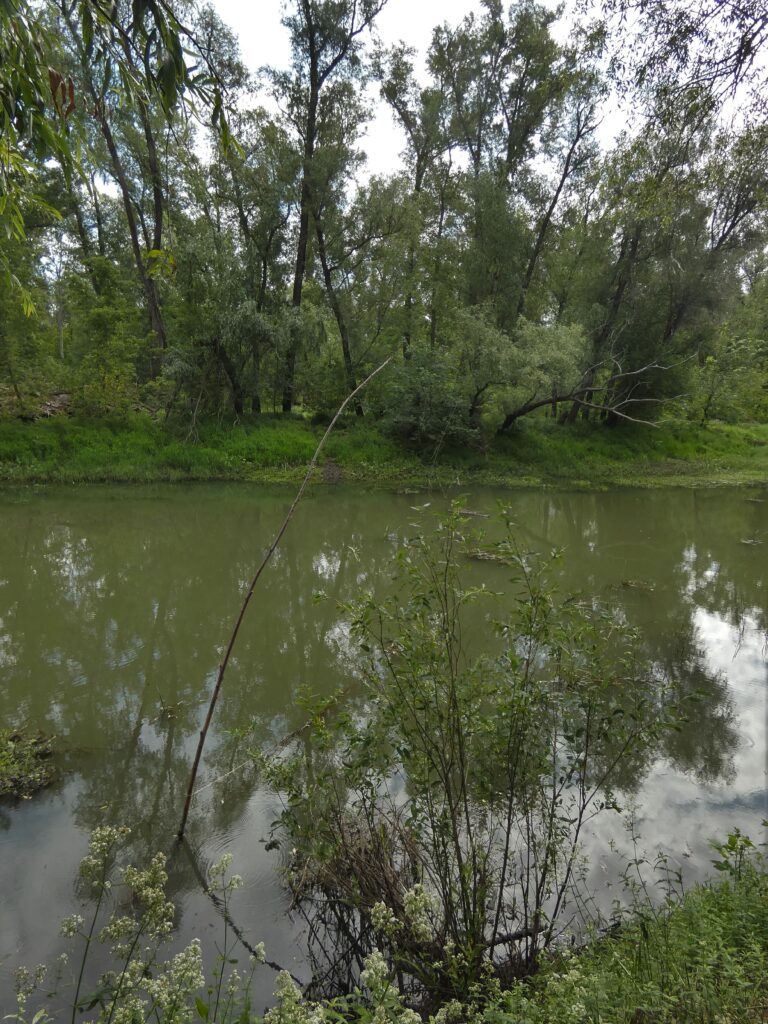
Abandoned fishing net in lake (Photo credit: R. Kennerley)
June expedition
In June of 2023, Dr Ros Kennerley (SMSG Co-Chair) and Prof. Sam Turvey (SMSG Conservation Coordinator) visited the stunning rivers and oxbow lakes that surround the Ural river in northwestern Kazakhstan to start a conservation project in the region. The in-country partners for this project are the Association for the Conservation of Biodiversity of Kazakhstan (ACBK) and researchers at North Kazakhstan University. One of the project fieldsites is Kirsanov Nature Sanctuary, which is a vast expanse of meandering rivers and lakes with wooded banks that borders Russia.
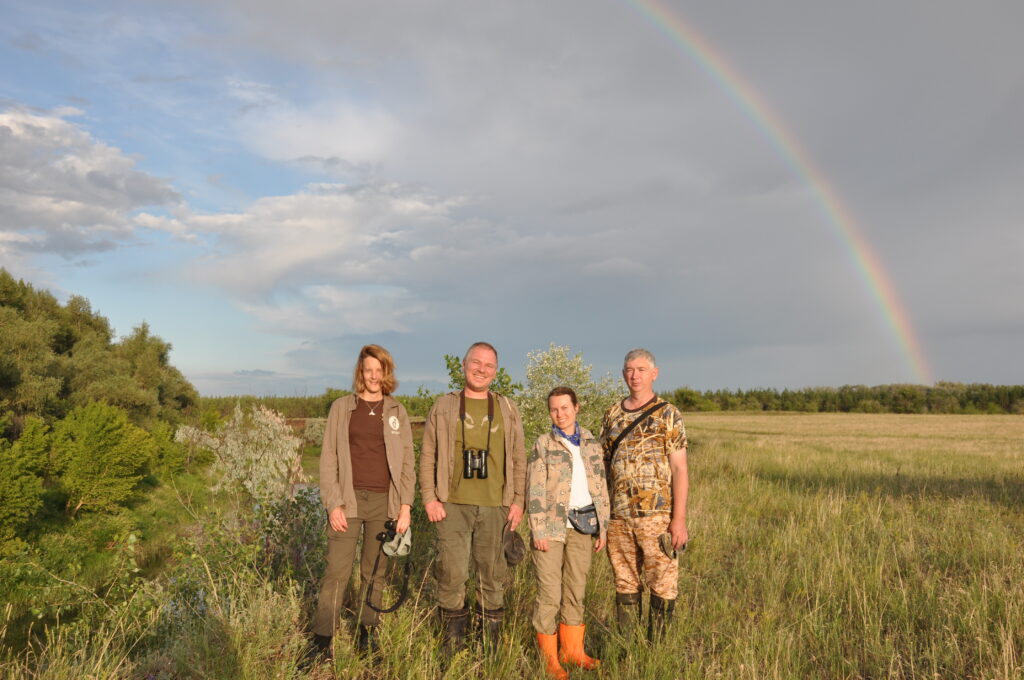
Kazakhstan Russian Desman team – Dr Ros Kennerley, Prof. Sam Turvey, Dr Alyona Koshkina and Michail Shpigelman
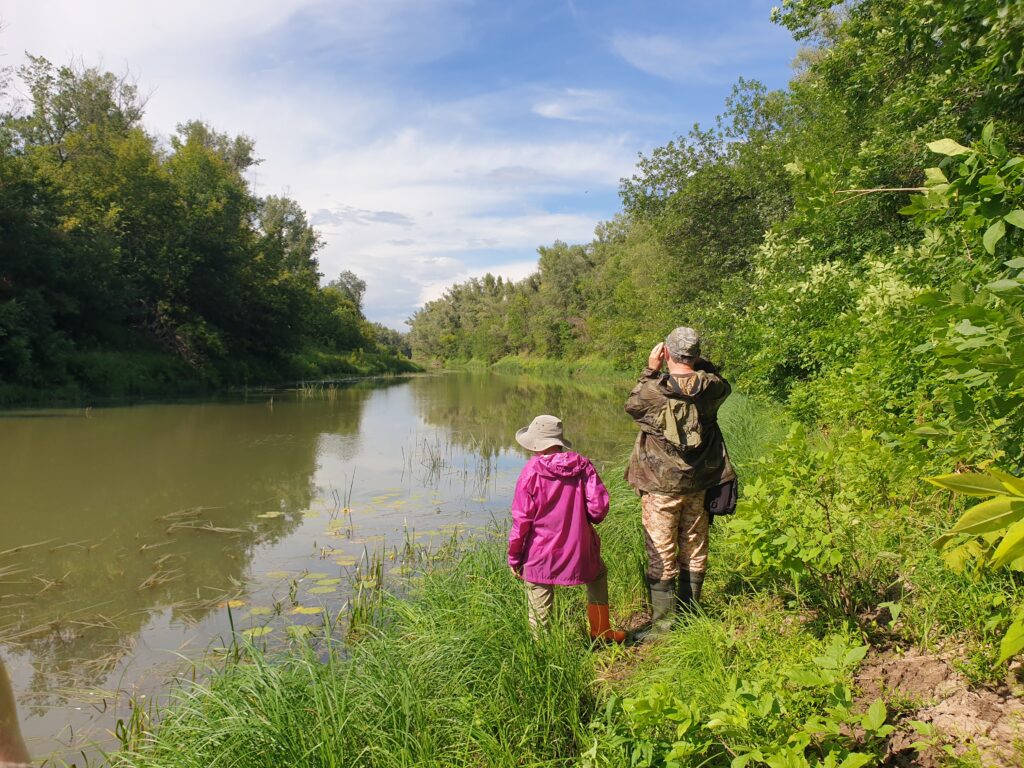
Fieldwork in Kirsanov Nature Sanctuary in Northwest Kazakhstan (photo credit: R. Kennerley)
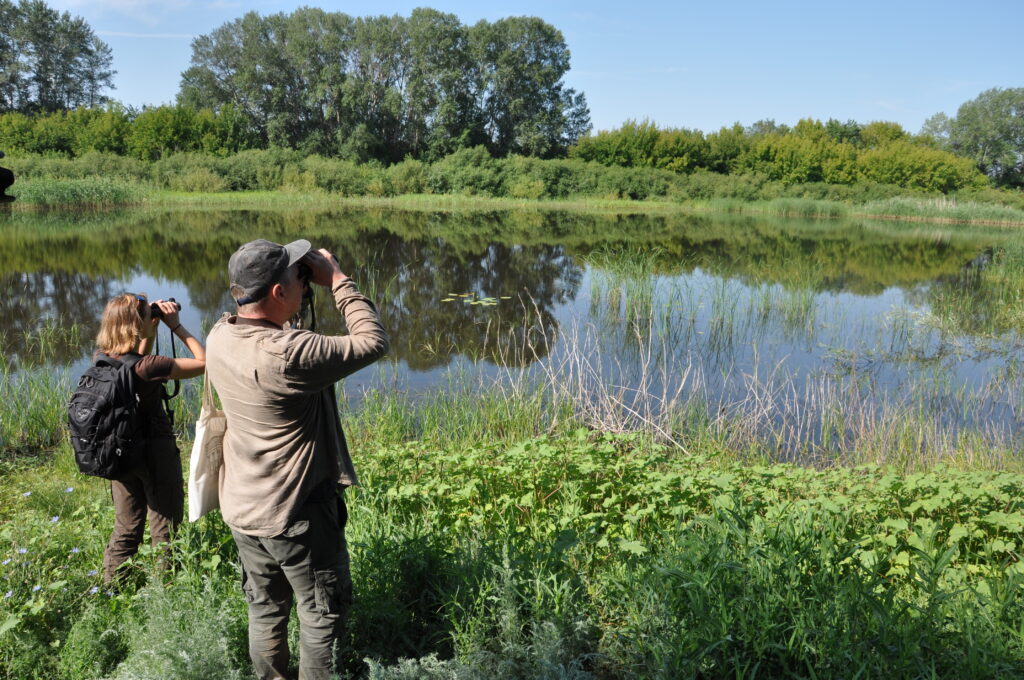
Visiting an oxbow lake (Photo credit: A. Koshkina)
What is happening?
Field staff have been trained up and are currently out and about testing novel ways to collect the essential data needed to monitor and inform conservation actions. Interview surveys with local water users and environmental DNA screening are being trialled in known desman landscapes, and the results of these will be compared with data collected using traditional methods to monitor desmans by counting active burrows. The project aims to determine which approach is most efficient, cost- and labour-effective, and easy to conduct by local researchers.
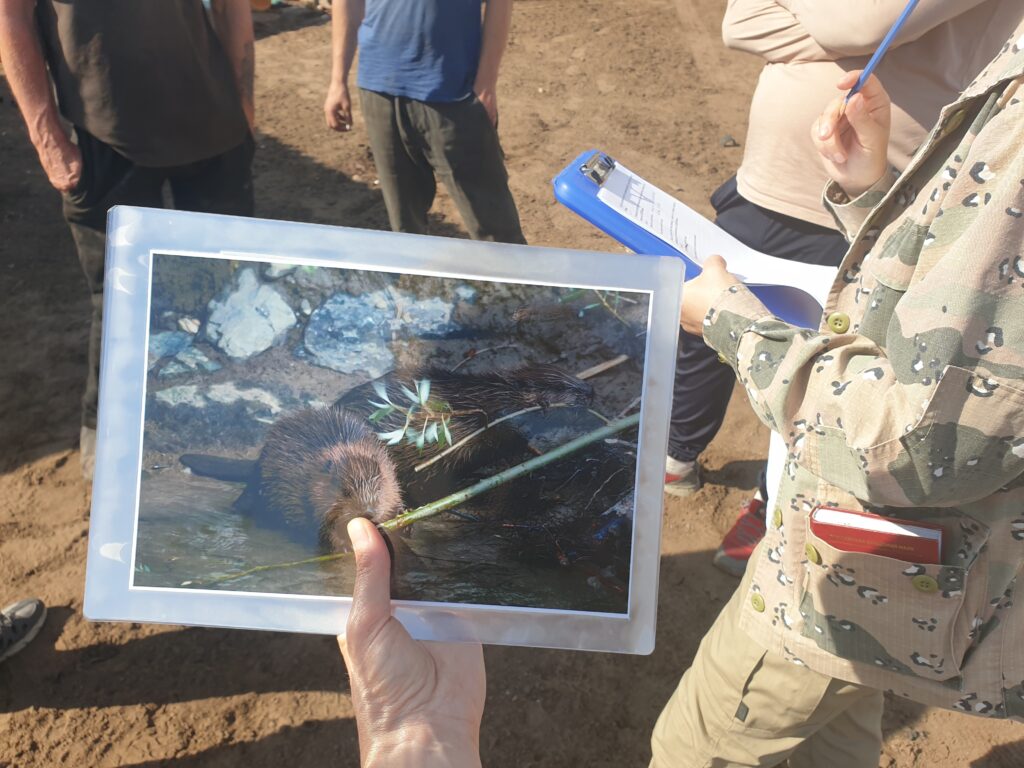
Trialing a Local Ecological Knowledge questionnaire (photo credit: R. Kennerley)
Next steps
While we await the data and analyses from the trials, the project will examine the historical distributions of the species across the country and use various mapping data layers to unpick the likely causes of decline in Kazakhstan. Ultimately, the project aims to develop a long-term conservation monitoring and management plan with agreed goals, visions, milestones and stakeholder responsibilities, at both national and landscape levels.
We would like to express our huge thanks to our three funders for this project: The Mohamed bin Zayed Species Conservation Fund, SSC EDGE Internal Grant, and Stiftung Artenschutz. We are also grateful for the support to our SMSG core costs from Re:wild, the Zoological Society of London and Durrell Wildlife Conservation Trust.
To find out more about our small mammal Key Species click here.
Authors: Ros Kennerley (SMSG Co-Chair) and Sam Turvey (Conservation Coordinator)





